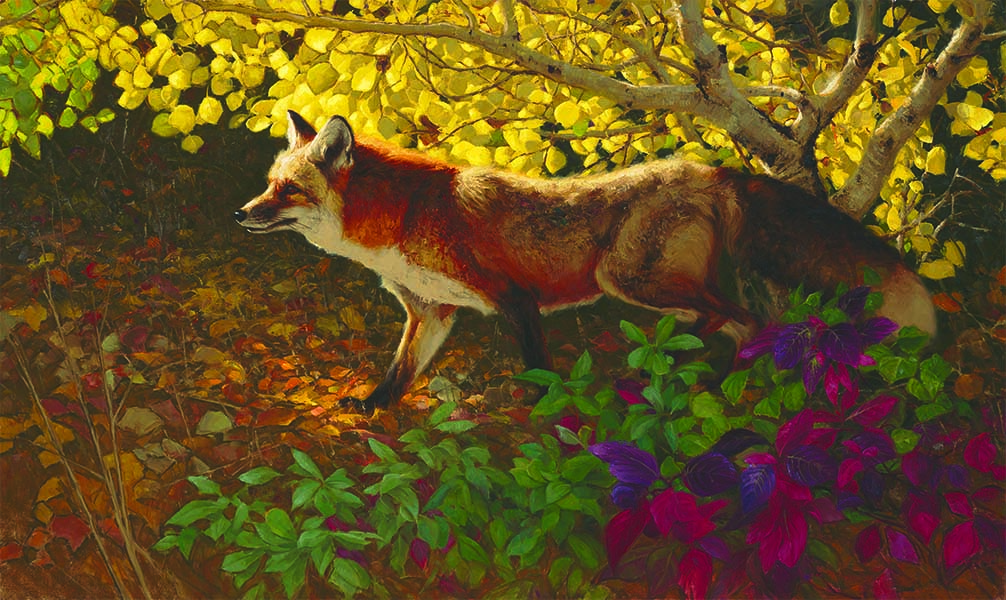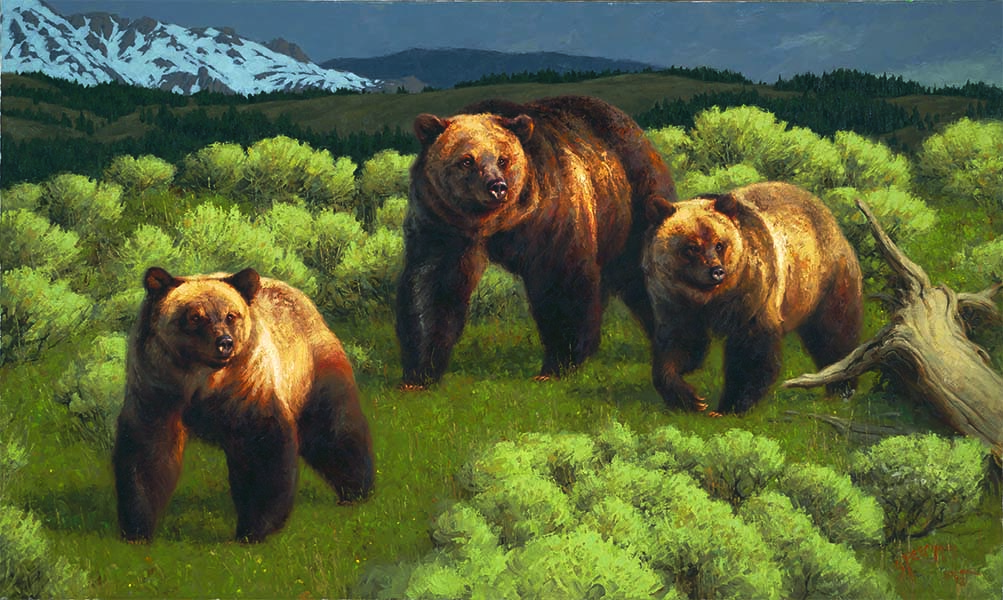
Greg Beecham’s father was an illustrator, and he grew up hunting, fishing, hiking and exploring with his father in upstate New York. He mimicked his father’s skills of observation and knowledge of the wild and the animals living there.
“That instilled in me a love for the outdoors and a desire to portray the wilderness accurately and artistically. All that time, my dad was teaching me to draw. By the sixth grade, I could draw photographically, and I’ve spent the rest of my life taking that skill and refining it to my vision of art,” Beecham says.
Beecham lives in Dubois, Wyo., and has painted for 36 years. Dubois is fertile ground for artistic inspiration; its inhabitants include grizzly bears, wolves and other wild creatures.
“It’s the best possible place for a wildlife artist to live,” Beecham says. “I venture out as often as I can on ‘critter’ trips. On these expeditions, I usually find a particular animal to study. Whether it is a flaming gorge for antelope or a spectacular valley in Yellowstone for spring grizzlies, I am drawn to the wild.
“Whether I’m witnessing a grizzly digging for ground squirrels, or staring down a bull moose with a Grand Teton backdrop, I learn something new every time I’m in the wilderness,” he reflects.
Beecham reveres Leo Tolstoy’s comment, “A work of art must say something new.” Beecham believes the animals and wilderness speak to him in a special way.
“If wildlife artists spend the time necessary and are willing to truly see, their work will always meet Tolstoy’s estimation,” he says.
To achieve that, Beecham continually experiments with new approaches. He also reads avidly about the nature of color theory, something, he says, “my dad never really taught me.”
Like Matteson, Beecham is a Prix de West artist. He is a three-time winner of the wildlife award and received the 2011 Buyers’ Choice Award.
Angus is one of his favorite paintings in Rendezvous. The black bull painting was inspired by Beecham’s mentor, David Slonim, who urged him to paint larger shapes.
“I painted Angus, attempting to convey the animal’s strength in its musculature. I hoped to magnify the sense of massiveness in the animal,” Beecham explains.
Rendezvous proceeds allow the museum to acquire more fine work enhancing the museum’s permanent collection. Call 918.596.7200 for more information.























